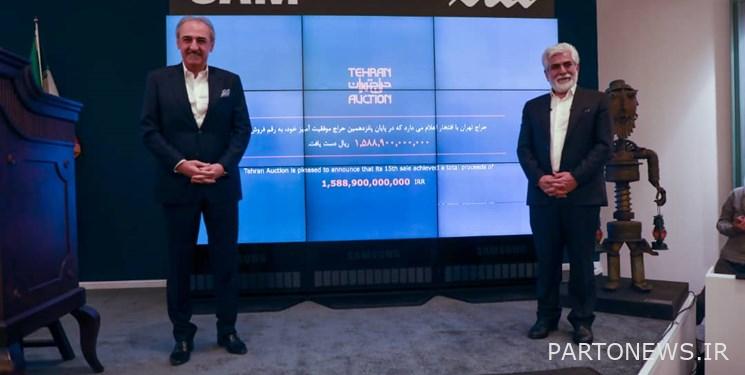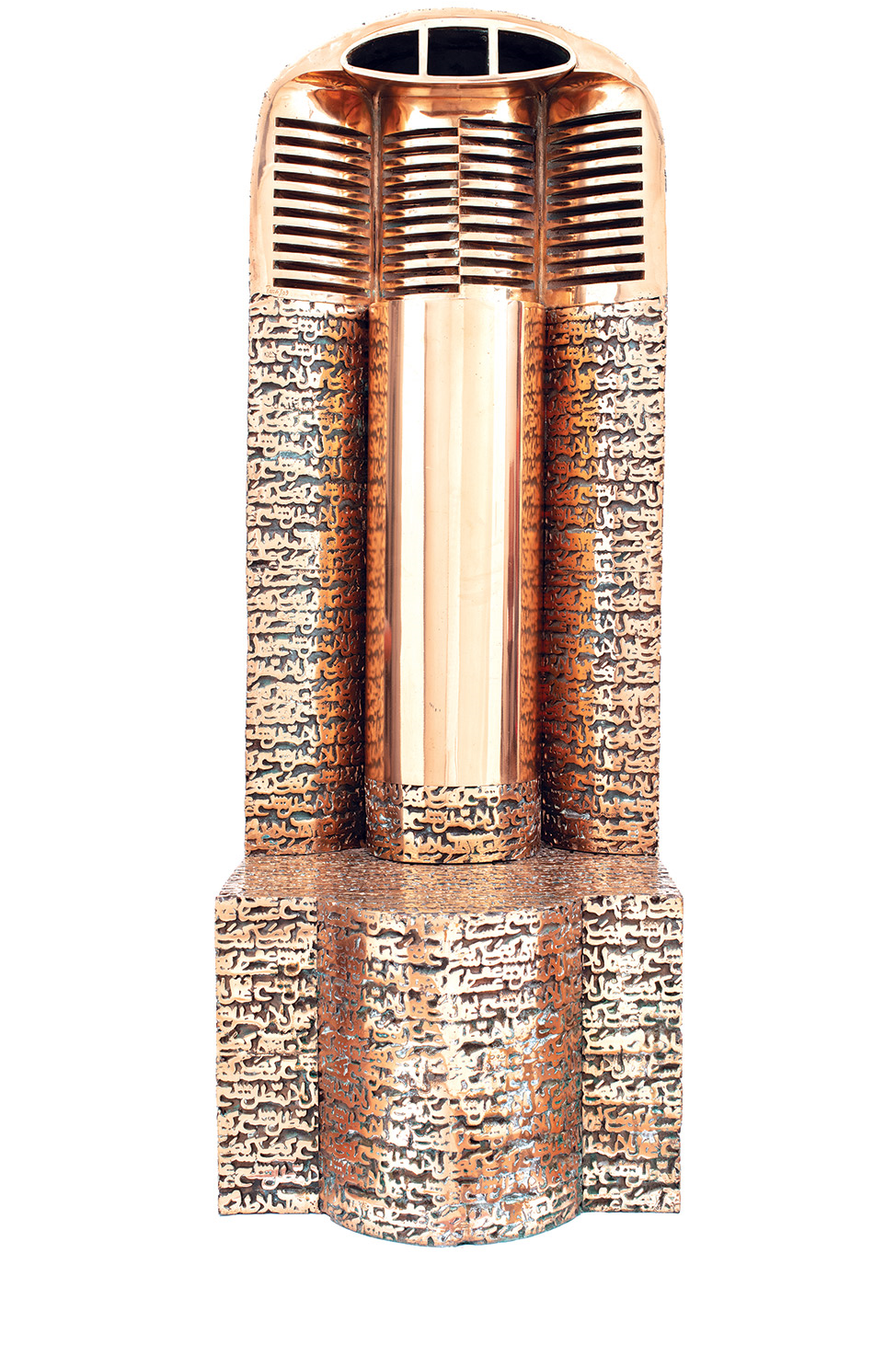Tehran auction, a lot of unresolved ambiguities

Fars News Agency – Art and Media Group: Unrealistic price of works, concealment of buyers list, money laundering fraud, counterfeit fraud and falsity of some works, unclear selection criteria, names of judges, etc. In general, the lack of transparency in the auction is one of the reasons. It makes us take a critical look at the Tehran auction in line with public opinion.
Tehran auction and moving away from the field of visual arts
It can be clearly seen that there is no significant relationship between the Tehran auction and the country’s visual arts field. In this auction, the works of contemporary and young artists who are famous, successful and alive were seldom displayed. The general focus of this market is on the works of artists who are generally old or dead. The organic relationship between the Tehran auction and the country’s art field has been severed, and the works on display in galleries today are outside the visual horizon of the Tehran auction. We do not see any trace of the works displayed in the auction in the galleries of the country (most of the recent auction works belong to the forties and fifties).
We do not see any trace of the works displayed in the auction in the galleries of the country, and most of the works of the recent auction belong to the 40s and 50s.
In the late 1980s, when Christie’s auction was held in the Persian Gulf and some of the works of Iranian artists were sold at the auction, a few years later, what was seen in the galleries was a direct product of the taste created by this market. Apart from empathizing with those works, the issue here is the impact and the relationship that such auctions should have with the field of art; That is, most artists and galleries find artistic approaches and create works of art in accordance with auctions; But it seems that the Tehran auction does not play any role in building the aesthetics and taste of the country’s art scene today.
In this market, quality and aesthetics are not desired
But this iceberg of auction must be explored from new perspectives. Because this market is not based on a clear logic. The more you focus on it, the more you realize that it is staged and played; And this causes a lot of speculation that arises every time after the Tehran auction.
Because this market is not based on a clear logic. The more you focus on it, the more you realize that it is staged and played; And this causes a lot of speculation that arises every time after the Tehran auction
The Tehran auction has been held for 10 years (initially once a year and in recent years twice a year). The first auction of Tehran started in 1391 with a sales of about two billion tomans and last week (December 1400) in its fifteenth period has sold about 158 billion. As usual, the works of this period are from the first generation of modern Iranian artists. In this period, according to the routine of previous periods, a record-breaking took place again and a work by Parviz Tanavoli was sold for fourteen billion and six hundred million Tomans (according to experts in terms of aesthetics and form, this work is one of the weakest works of Tanavoli / although in this market quality and Aesthetics is not what is meant and only the name and brand of the artist that matters and raises the price of the work). In a short pause on the growth of the selling price of works in the last 10 periods, we can see a growth of about 79 times. This growth has also been higher than other housing markets in the country (housing has had the highest price growth in recent years).

Tehran auction and warehousing phenomenon
The Tehran auction is a traumatic experience because it is an aquarium and not real; In this auction, art has become a commodity that reaches buyers not from the producer (artist) but from the warehousemen. The main emphasis of the auction is on people who work with the same policy. Warehousing policy. It can be analyzed that the Tehran auction is a kind of bargain between the warehousemen of Maidan Honar. Undoubtedly, there is a difference between the warehouseman and the collector. Collectors generally have a clear and dynamic activity. Is.
The Tehran auction is a traumatic experience because it is an aquarium and not real; In this auction, art has become a commodity that reaches buyers not from the producer (artist) but from the warehousemen. The main emphasis of the auction is on people who work with the same policy; Warehousing policy!
Warehouses lower artistic and aesthetic standards and offer only a certain type of product (which their warehouses are full of), while severely limiting and undermining the ability of the elite. In other words, the Tehran auction is a field of a fictitious nature, meaning that it lacks effective leaders who are able to create the sustainable economies needed to preserve independent works of art. In general, there is no significant relationship between the prices offered at auction and the prices of works in galleries. For example, in this period, the works of one of the artists have grown by 380%. Interestingly, the same artist in his last exhibition, which was held in one of the relatively successful galleries in Tehran, could not sell any of his works, and the gallery has returned all the works to the artist. Now the question arises whether the buyers present at the Tehran auction could not buy a work from the same gallery or from the artist himself at one-twentieth the price? What happens when the artist’s work sells for 380 times the original price (there is a big gap between the original price and the artist’s real price in the gallery)? Is it except that one of the same warehousemen who is running the market has a large number of works by this forgotten artist and wants to multiply the price of his product with this trick? That is why this auction and its prices have neither legitimacy nor popular support and they probably consider themselves unnecessary. Undoubtedly, the consequence of the Tehran auction phenomenon is not in the service of creating enthusiasm and motivation in the field of visual arts of the country, but in fomenting frustration in the field of culture and the artistic community.
Melting warehouse goods in the name of “the birth of Iranian modernism”
Now, let’s shine a little more light on this iceberg so that Bell can catch us. What is going on in this market? We live in an age where nearly 50 developing countries are technically bankrupt and are considered failed. The per capita GDP of about 100 developing countries is lower than their per capita in the late twentieth century. Nearly three billion people in the world live on less than two dollars a day. About 1.3 billion people live in the poorest developing countries on less than a dollar a day. The number of economic refugees is more than 125 million. The statistics of people in the world who can not read or write, who do not have safe drinking water or who die of preventable diseases are just as astonishing. Today, in our own country, we are experiencing difficult economic conditions due to sanctions and wrong policies of the previous government. While the auction in Tehran is selling astronomically, many artists in the capital could not afford to rent houses and moved to the suburbs or closed their workshops and relocated to other cities. Some artists can not even afford to buy paint, canvas and brush. Now, in such a situation, the growth rate of the 15th Tehran auction period breaks the record of the previous periods, and in an unprecedented way, the total sales of its sold works reach 158 billion and 890 million Tomans.
It seems that the reformist operators of this market, who also have a history of management at the highest levels of the country’s cultural and artistic centers, want to compensate for their socio-political failures behind phenomena such as the Tehran auction; But they do not seem to know that they have made fatal mistakes and missed opportunities. They themselves are to blame for the increase in poverty in society
It seems that the reformist operators of this market, who also have a history of management at the highest levels of the country’s cultural and artistic centers, want to compensate for their socio-political failures behind phenomena such as the Tehran auction; But they do not seem to know that they have made fatal mistakes and missed opportunities. They themselves are to blame for the increase in poverty in society, and over the past decades have steadily stepped up the slope of people’s frustration with the government and widened the class divide. In all political, social, economic and cultural spheres, inequalities have increased and society has become more polarized and historical and current dissatisfaction has intensified. It seems that the Tehran auction is a symbol and manifestation of the reformist discourse, inefficiency, political disorder, rent, authoritarianism, monopoly, personal interests, etc., a discourse that has led society to disintegration and despair. The culmination of the reformists’ cultural gesture can be seen in the Tehran auction. As much as a showcase and aquarium and away from the community (living world) and the art field. Just as alien to the status quo and admiring capitalism and commodification. Reformers of the culture of the Reformation today in the Carnival of Democracy are in line with the logic of the entertainment market, sales and privatization in the privatization of art, and in a catastrophic event present the work of art as a luxury and castrated commodity, thus gaining identity and wealth from disaster. are. The Tehran auction is a collective failure of the reformist discourse that has fueled privatization by blowing on the slogan of libertarianism, and that is why any news of it makes society frustrated, angry and sad. A society that has failed to live up to its expectations over the past eight years. This event leaves behind a lot of unresolved ambiguities in each period, however, it is constantly making its field more organized and gaining legitimacy in different ways. He makes books, writes art history, registers an art institute, produces a journalist and a critic, and in the name of the “birth of Iranian modernism” melts the goods of his storehouses. In a more general sense, instead of spreading art in the society and creating vitality in the country, it has created a kinship market that has been constantly fattening for 10 years. Any critic who has a fair and rational view knows that the Tehran auction is not only a collective success but also a manifestation of increasing inequality.
End of message /
You can edit this post
Suggest this for the front page
.

